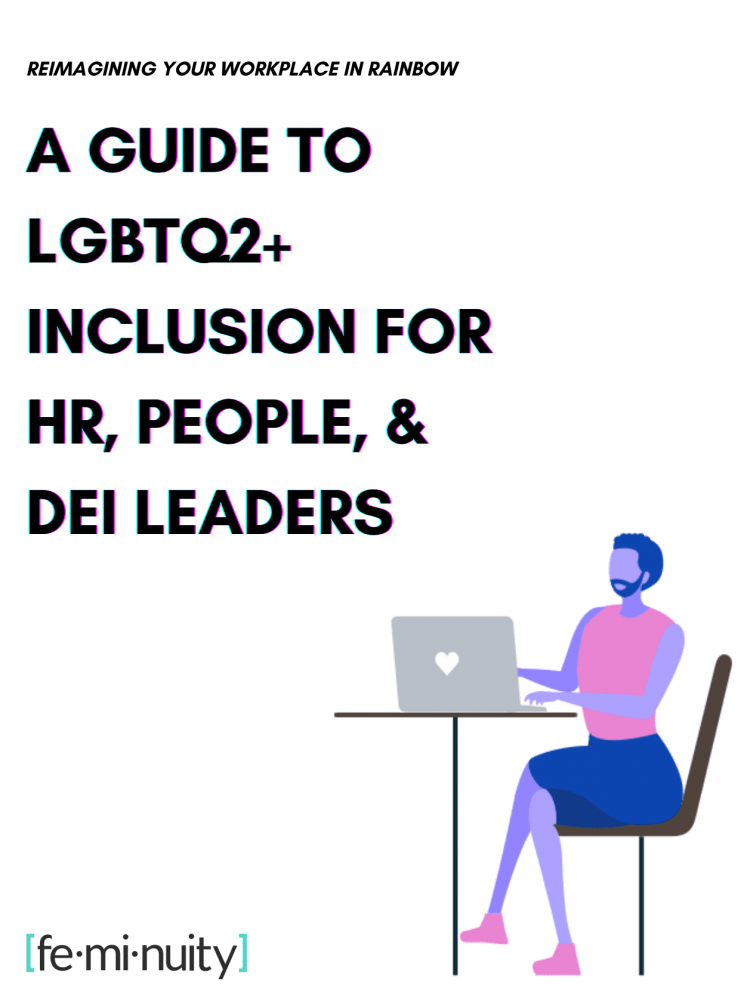Feminuity released a groundbreaking new resource: A Guide to LGBTQ2+ Inclusion for HR, People, & DEI Leaders
The publication serves to center the needs and experiences of LGBTQ2+ employees, keeping companies at the cutting-edge of inclusion and better-equipping organizations to promote a sense of fairness and belonging in their future workforce.
Maeve Plummer, a partner of Feminuity, certified Human Resources professional, and author of the guide, summarized its significance with the following remarks:
“In this resource, we set out to create a guide for HR, People, and DEI leaders to adapt to the sexual and gender fluidity that increasingly characterizes our contemporary world. From policies to benefits to workplace culture, this publication provides a first-of-its-kind exploration of leading practices that will revolutionize workplaces across the globe by putting LGBTQ2+ considerations front and center.”
Workplace conversations around sexual and gender diversity are complicated as some still believe that these dimensions of the human experience should be kept private and divorced from professional life. However, Maeve challenges this thinking:
“We communicate our sexuality and gender in subtle ways everyday no matter the context. Too often sexual and gender diversity is relegated to the shadows of office initiatives due to unjust politicization and sensationalism. Our sexual and gender identities are fundamental parts of who we are—company policies and procedures should be designed not only to accommodate but to celebrate them.”
Dr. Sarah Saska, CEO and Co-Founder of Feminuity, expressed her enthusiasm and support for her consultancy’s latest open-source output:
“Feminuity is proud to support what we consider a paradigm-shifting examination on how to affirm the ever-growing LGBTQ2+ workforce. This collection was informed by extensive research and an unwavering passion to integrate queer perspectives into the ways companies do business.”
